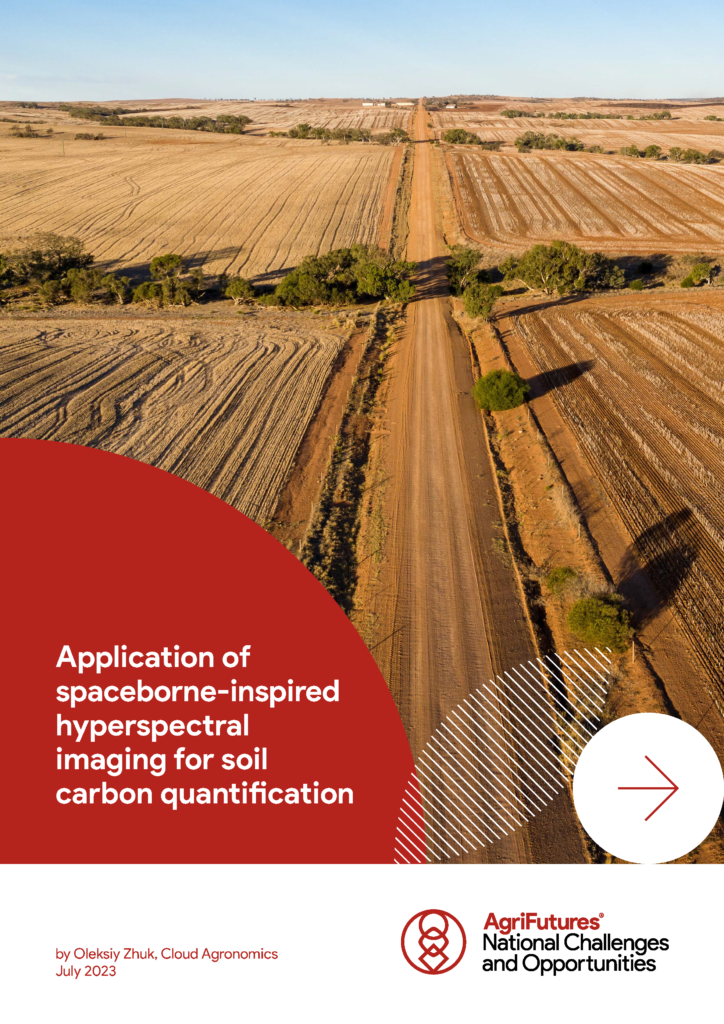Pathways to develop a future-ready workforce
Like the industries that AgriFutures Australia serves, the future workforce will likely be broad and diverse. For rural industries to be better prepared for the...
 NATIONAL CHALLENGES AND OPPORTUNITIES
NATIONAL CHALLENGES AND OPPORTUNITIES 
44 pages
Published: 1 Sep 2023
Author(s): Oleksiy Zhuk
ISBN: 978-1-76053-393-9
Download report PDF
DownloadPurchase a hard copy - AUD $50
For Australia to transform the economics of soil carbon projects for Australian farmers, and rapidly scale the adoption of regenerative practices, the cost of baselining current levels of soil organic carbon must be significantly reduced.
To evaluate if this is feasible, Cloud Agronomics investigated whether remotely sensed satellite data could reduce the number and spatial density of soil core samples taken from paddocks yet maintain the accuracy of soil carbon content estimates. This was achieved through:
The project has focused on using a remote sensing/machine learning (RS/ML) approach to directly predict soil organic carbon at 100 sampling points per hectare. In its simplest form, the RS/ML approach takes remotely sensed landscape-scale information and other spatial data layers as its inputs. The model is then ‘trained’ with soil sample and specific location data to capture variability in soil organic carbon content at a paddock or regional level.
The key finding was that fewer physical soil samples (a reduction from nine to six per hectare) could be taken in conjunction with the RS/ML model, thereby reducing the cost of sampling per hectare.
The project has demonstrated that leveraging remotely sensed data is a key component of accurate soil organic carbon quantification. The technology base could be considered as part of a broader data-driven challenge that requires other spatial covariates (including physical climate and weather proxies, topography, and edaphic variables) as well as physical soil samples to design new decision tools to estimate soil carbon. This observation contrasts with a purely remote-sensing approach where typical measurements from a single sensor assume a relationship between soil organic carbon content and the remotely sensed data.